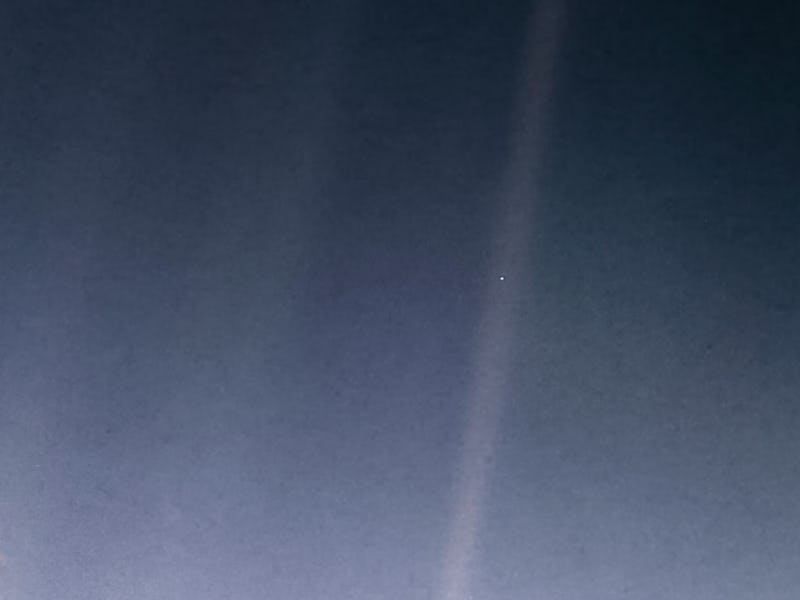The ‘Pale Blue Dot’: On its 30th anniversary, why it's important to stare back at ourselves
This iconic image will still give you chills — 30 years later.

In 1990, a spacecraft headed into the unknown took one last look at our home planet, capturing a view of a lonely Earth in its empty surroundings.
Thirty years later, NASA released an updated version of the image and reminded Earthlings why it’s important to take another look at ourselves and where we stand in the universe. As climate change threatens the only world we’ve known, the ‘Pale Blue Dot’ is relevant to our fragile existence today.
On February 14, 1990, Voyager 1 snapped a picture of Earth from 3.7 billion miles away minutes before the probe’s cameras were turned off in order to conserve power. The Voyager mission launched in 1977, with two twin spacecraft designed to cross into interstellar space and peer at the Solar System from the outside.
This was the angle from which Voyager 1 took the iconic image.
Amazingly enough, the Voyager twins are still operational until today, beaming down crucial data on the border that separates us from the rest of the cosmos.
But this image was never on the Voyager’s agenda.
Candice Hansen, a planetary scientist at NASA who was part of the team behind the original image, tells Inverse she was also one of the people who asked for the photo to be taken:
"It was outside the realm of what we usually did with the spacecraft. We didn’t feel like we really had the resources to really do that type of engineering."
Hansen, along with astrophysicist Carl Sagan who wrote a book inspired by the image titled A Pale Blue Dot, kept asking for the image of Earth until Voyager 1 was coming up on its encounter with Neptune when they secured extra funding for the additional resources.
And the result was worth it, the image showed a tiny speck all on its own, surrounded by nothing in the vast universe.
This was the original image captured 30 years ago.
“I was sitting there and we had a little trouble finding it in the image,” Hansen recalls. “Once I figured it out where it was, to see it in that ray of light, it’s so incredibly special.”
"It’s so incredibly special."
At the time it was taken, there was political turmoil regarding the Soviet Union presidential elections. And the image of our lonely planet provided some perspective. And today, as rising global temperatures threaten our planet, the image is still just as relevant.
Hansen remembers that one of the messages that resonated with her at the time was how alone we are, that it’s just us out there.
“If we screw up our planet, we’re screwing up ourselves,” Hansen says. “We don’t have another option, there’s no plan b. We really need to take care of this world.”
“Back then and now, it’s kind of the same message,” she adds.
The biggest ongoing quest in astronomy has been to find alien worlds out there that may host life. And while scientists have found over 4,000 exoplanets, they have gathered possible clues of habitability. However, as far as we’re concerned till today, we’re still alone in the infinite cosmos.
And it is quite apparent how alone we are when we stare at ourselves in that iconic image that still rings true today.